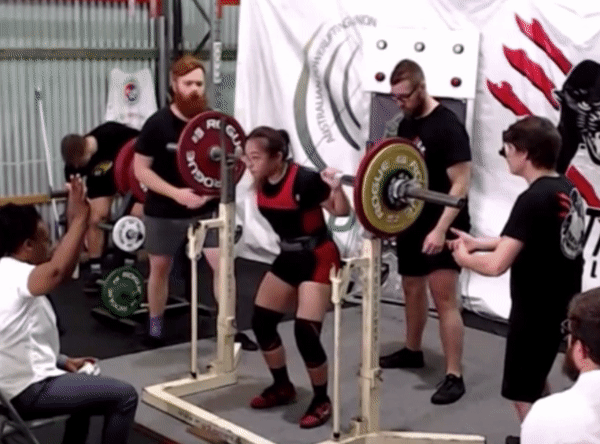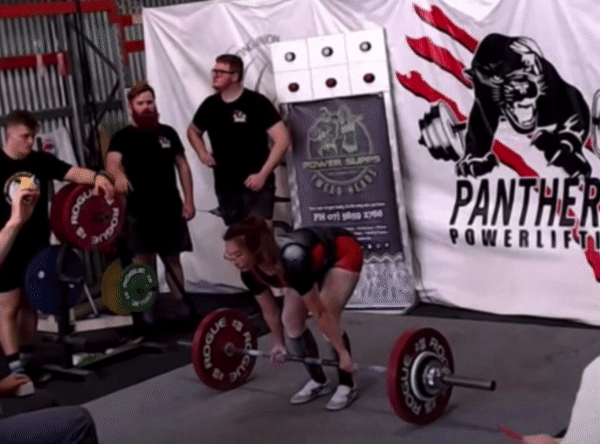Perhaps you’re reading this article because you’re a female powerlifter who has experienced some sort of leaking while lifting. You could also be a coach reading this article to help address this issue for your female athletes. This article is targeted at the lay powerlifter, so medical jargon and expressions will be toned down. Even so, there are still some terms that I hope everyone will have a chance to learn to increase their knowledge in this area.
It is always helpful to have a disclaimer before proceeding. I am a student physiotherapist, not yet trained as a women’s physiotherapist. Most of my understanding about the pelvic floor comes from research and inference from available literature. Feel free to contact us at [email protected] if you have further questions.
Read more about the anatomy of the pelvic floor in our part 1, and introduction to urinary incontinence in our part 2!
As a weight lifter, is this normal or is there something wrong with me?
Let’s define what is normal and what is abnormal. ‘Normal’ in the medical world can mean that a particular condition has a cause which can be eliminated or changed to reduce the impact of the effect. ‘Abnormal’ refers to issues that require medical attention and a greater level of monitoring and treatment methods.
With that in mind, let’s go through some examples first. Acne outbreak is not usually normal. However, in a teenager undergoing puberty, it is normal. Lower back soreness (pain in simpler terms by most people) is normal the day after some intense high volume deadlifts. There is a certain cause for a certain effect. With proper lifestyle adjustments, off-the-shelf acne products, and modifying your training, these problems can be tackled easily.
Applying this perspective, diagnosis of a leaking problem has multiple levels. It depends on the severity and trigger threshold of the leaking problem to decide the level of intervention, ranging from adjusting factors around, to seeking direct medical attention. Occasional leaking while doing strenuous activities with high IAP on the pelvic floor is a common symptom experienced by many. Female athletes are approximately three times more likely to have urinary incontinence compared to control groups.
However, it is not normal if you are experiencing worsening symptoms within a short period of time where you are experiencing streams of leakage (one training cycle), doing only 50-60% of your max at low volumes and that you feel like there is a bulge in your down south. A red flag is when you start experiencing leaking during daily activities like hanging laundry, washing clothes, cooking and coughing or sneezing, where these symptoms did not exist before. If you are experiencing any one of these symptoms, I’d advise you to visit your healthcare professional, preferably a trusted women’s physiotherapist.
If you are experiencing incontinence due to a recent increase in training volume and high caffeine/water intake due to water loading, I would say that there is a cause and effect. Drinking too much water will result in higher bladder pressure and a simple intervention is to practice proper voiding habits before training. Relax entirely to finish voiding and to not strain when urinating (forcing your pee out). Another solution is to limit the use of caffeine and adopt better habits to increase daily energy levels like increasing sleep time and better food choices. As for training regime, I’d advise you to talk to your coach to work out a better more gradual training progression to suit your body’s recovery needs.
I understand that it may be difficult to change many different factors e.g. to lose weight and hit high training numbers. It would be prudent to work out a more effective plan in the long term to meet your training goals.
Does powerlifting result in increased stresses on the pelvic floor?
Powerlifting, along with other strenuous strength sports like weightlifting may increase IAP to a greater extent than activities like coughing and jumping (I’m talking about you jumping to get something from the top shelf). We slap on a thiccc belt, take in a deep breath and brace our gut before executing a lift. However, the increase in IAP from the use of the belt remains a question and we do not know how much of an effect using a belt could cause. The use of a belt is to enable you to brace your abdominals by filling your lungs with air and breathing in deep. Your belt must not be too tight such that it is difficult for you to do so.


Here are some ideas I can come up with that you can help with your situation:
- Only use the belt when you really need to.
- Employ a more gradual progress in your lifts rather than having a chiong sua attitude.
- Learn to breathe and brace. There is no need to belt up so tightly that you can’t brace properly.
- Learn how to co-contract your pelvic floor during a lift.
How common is SUI in powerlifting? What are the other risk factors?
Powerlifting is a low impact sport with low ground reaction forces. In a recent study amongst 134 female powerlifters in Australia, 41% experienced SUI at some point in time, while 37% were experiencing SUI during training, competition, or maximum effort lifts. This is an alarming rate which calls for more attention!
In the same study, the researchers studied the effect of age, body mass, resistance training experience, and competition grade on the incidence of UI. They found that the incidence of UI was ONLY significantly different among women with different resistance training experience compared to other factors like age groups, body weight categories, or competition grade (come chat with me if you want to find out more). The last item in their questionnaire asked for women to list down comments on their experience with UI in powerlifting and 27 women out of 134 replied. This is a very small number of participants but it may be worth looking at what these women have said.
UI in training: deadlifts have resulted in increased incidences of UI with sumo resulting in more UI than conventional. Following deadlifts are squats and front squats. A handful reported that wearing a belt caused UI.
Intensity vs volume: UI often happens with very heavy or maximal weights while some commented that UI happened at the end of sets with moderate to heavy weights. One woman indicated that the weight that triggered UI increased progressively as her strength increased. This aspect is highly subjective and one should be aware that “heaviness” is perceived differently by every individual.
It seems like most of the time, UI happens with women who pull sumo. Are they at greater risk than those who pull conventional?
As per the findings from Wikander et al., women who pull sumo seem to be at higher risk. There were no further discussions regarding this and reasons behind that will only be more conclusive after more investigations are done.
I speculate that with the position of the torso angled more perpendicular to the ground, perhaps there is a biomechanical association between vertical forces acting directly on the horizontal hammock structure of the pelvic floor and the higher incidences of UI during sumo. Future research can look into the different types of lifts that cause higher incidences of leaking to have a better understanding of this phenomenon.
Wrapping things up
Understanding of urinary incontinence in powerlifting is at its infancy. At this stage, we understand that many women start to experience urinary incontinence after starting powerlifting and that there are several risk factors that may increase the odds of these women experiencing UI. Moreover, we also have mental health and soreness/pain in the pelvic region to think about. In the next part of the article, we will discuss the different types of rehabilitation protocols used for SUI and strategies, including specific exercises for the pelvic floor, that may help with SUI symptoms.
If you’ve experienced incontinence during your time powerlifting, do you agree with this? Let us know in the forums. You may also contact me here!
What next?
If you have missed out the first 2 parts, do check them out here (Part 1) and here (Part 2)!
This article and commentary first appeared on ENSO Powerlifting, on May 18, 2020.
